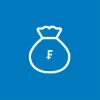Stock-based pillar 3a investment solutions are becoming more popular due to the current low-interest regime. To help retirement savers understand available options, independent online comparison service moneyland.ch once again carried out an annual comparison of major Swiss retirement funds.
Retirement funds are generally expensive
moneyland.ch analyzed the costs and performance of 56 Swiss retirement funds (for details, refer to the PDF comparison table which you can get using the box below).
The results show that the average total cost of Swiss retirement funds is 1.2% per year, based on a 10-year term with all funds weighted equally. “Swiss retirement funds are expensive,” concludes moneyland.ch analyst Felix Oeschger.
But there are also affordable options, which is why it is important to compare.
Differences in total costs
moneyland.ch analyzed the total costs of investing 100,000 francs of retirement assets over a 10-year term. In addition to administrative costs represented by the total expense ratio (TER), the analysis also accounted for possible custodial fees, sales charges and deferred sales charges (front-end and back-end loads).
The results show that the average total annual costs of Swiss retirement funds are equal to 1.2% of the invested capital. But there are big differences in total costs, depending on the individual retirement fund. Costs can be as low as 0.22% per annum or as high as 1.7% per annum (for the most expensive UBS retirement fund).
In other words, you could pay between 2200 francs and 17,000 francs over a 10-year investment term – depending on the retirement fund you use.
The total costs for the first year (including sales charges and deferred sales charges) can be as high as 3.3% depending on the fund.
Interesting note: At many banks, the more stocks a fund’s portfolio includes, the higher the fund’s total costs are. A possible reason for this is that banks know that funds with high stock components deliver higher returns, making costs less noticeable.
The most important thing is to compare all fees and charges over the full investment term, states moneyland.ch CEO Benjamin Manz. You can easily find and compare the total costs for the amount you plan to invest and the applicable investment term using the interactive retirement fund comparison on moneyland.ch.
Differences in fund performance
As part of its study, moneyland.ch also analyzed performance data for the past 3 years, 5 years and 10 years (up to the 31.10.2020. Refer to the free PDF comparison available below).
moneyland.ch deducted the TERs (ongoing administrative fees) from performance, but did not account for possible custodial fees and sales charges in performance calculations.
The results show that the higher a retirement fund’s stock component is, the better its performance over the past 5 years and 10 years has been. The reason for this is that the stock market has performed well over those time frames. However, the correlation between large stock components and strong performance is less pronounced over the past 3 years – largely as a result of the coronavirus crisis.
Over the past 3 years, Swiss retirement funds have had a combined average performance rate of 4.02% across the full term (with all analyzed funds weighted equally). The performance of individual funds ranged between -2.7% and 9.9% for the full 3-year term.
Over the past 5 years, Swiss retirement funds had a combined average performance of 11.6%. The performance of individual funds ranged between -4.5% and 20.2% for the full 5-year term.
Over the past 10 years, Swiss retirement funds had a combined average performance of 38.18%. The worst-performing fund had a performance rate of 17.10% over the full 10-year term. The best-performing fund had a 58.2% performance rate.
How important is fund performance?
The analysis of the past performance of retirement funds provides an interesting indicator from which to draw conclusions about retirement funds. “But the importance of fund performance with regards to choosing a retirement fund is often overestimated,” says Benjamin Manz.
There is no way to determine how a fund’s performance will develop based on its past performance because markets are too unpredictable.
“Your risk profile and total fund costs are a much more important factors when choosing a retirement fund,” explains Felix Oeschger. Choosing passively-managed retirement solutions which simply replicate market indices is generally recommended.
If you expect to invest your retirement savings over a term of at least 10 years, using an investment solution with the highest possible stock component is worth considering. The reason for this is that historically, stock indices have always delivered positive returns over longer terms, outperforming bank interest and bonds. If you hold your stock investments over at least 10 years, the chance of your investment recovering from possible losses and delivering positive performance is high.
Digital retirement asset management solutions: An alternative worth considering
A number of digital retirement asset management solutions are now available. These include Descartes Vorsorge, finpension, frankly (Zürcher Kantonalbank), Selma Finance, Sparbatze and Viac.
The main advantage of these new retirement-saving solutions is that they have low investment costs. Depending on the service provider, the costs of a pillar 3a stock portfolio can be as low as 0.42% per year (including asset management fees and fund costs). That is significantly cheaper than comparable retirement funds.
Comparing the costs of retirement asset management solutions alongside retirement funds is recommended. Comparing performance is difficult because most digital retirement asset management solutions are relatively young. But the most important factor when choosing a retirement investment solution is not past performance but future costs. You can find more information about retirement asset management solutions here.
More on this topic:
Compare Swiss retirement funds now
The costs of retirement funds explained

 Deal of the Day
Deal of the Day 








